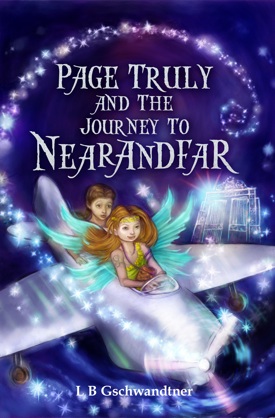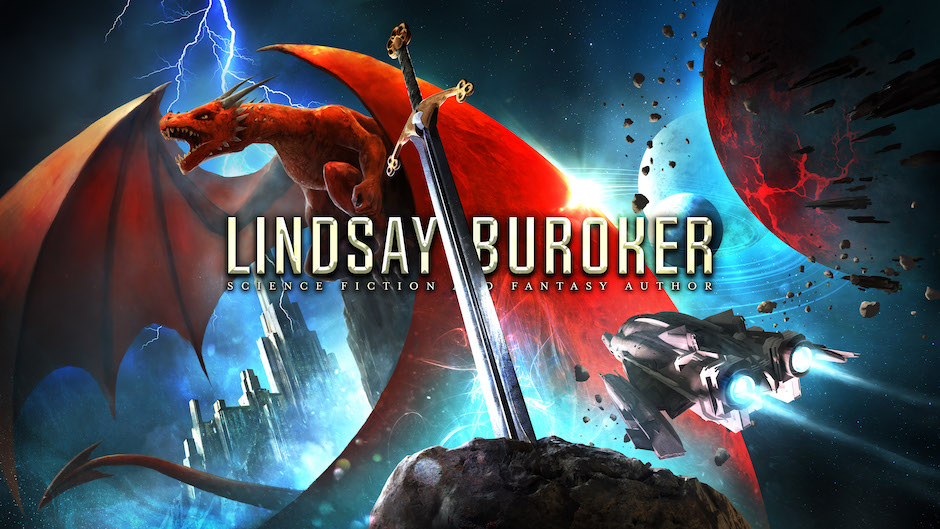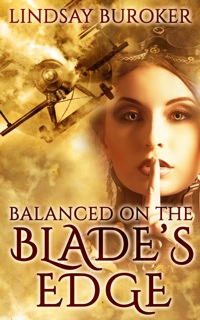 Yesterday, I wrote about the benefits of guest posting, and today we’ve got a guest post by L.B. Gschwandtner. Appropriate, don’t you think?
Yesterday, I wrote about the benefits of guest posting, and today we’ve got a guest post by L.B. Gschwandtner. Appropriate, don’t you think?
She’s here to write about her experiences e-publishing, statistics on the growing ebook industry (interesting stuff for authors!), and her novels, The Naked Gardener, and a fun children’s ebook Page Truly and The Journey To Nearandfar (visit the Goodreads giveaway page to enter to win a copy). And now for her post:
The Indie Author, That’s Me
It may be as big a reading revolution as the Gutenberg Bible. You’ve heard of Indie rock, Indie film, even Indie classical. But what about Indie books? Well, their time has arrived. And when you talk Indie authors at this moment, you’re talking Kindle and, to a lesser degree, Nook.
I’ve answered questions about my new book, The Naked Gardener, for many different blog interviews and the subject of how book publishing is changing came up in each one. We’re talking fiction – from an author’s point of view, and Indie authors.
The Indie Road
When a writer friend talked me into going Indie on Kindle, I hesitated. But when her sales took off, I uploaded The Naked Gardener in digital format and Amazon.com’s sister business, Createspace, as a traditional print book. We all know about Kindle and that the iPad has a Kindle app. There are others. Barnes and Noble’s Nook, and a host of new devices that allow users to download books and other print products in digital form to read as they like. It’s great. People seem to love their Kindles or Nooks or whatever. But what about writers? And what about traditional publishing? What is going to happen?
For one thing, there will be more books available for digital devices. A lot more. That’s because Amazon has set up an incredible supply channel and marketing machine using authors not only to supply the books but to promote them as well.
According to Stephen Shapiro, a blogger who attended last year’s annual convention of the book industry, BEA, each year, 172,000 new books are published in the United States. Of those, only 1,000 books sell more than 50,000 copies in retail channels. Less than 25,000 sell more than 5,000 copies. Ninety-three percent of books published (160,000) sell less than 1,000 copies. That represents all books published.
I personally know fiction authors whose agents tell them that sales in the 5,000 range for a work of fiction is highly respectable. In the 10,000 range it’s highly unusual. And in the twenty to fifty thousand range it’s highly unlikely. Above that you’re talking DaVinci Code and The Help. Rare cases that defy the odds makers.
Enter Kindle, and the Indie author. In July, 2010, Amazon founder Jeff Bezos reported: “ … while our hardcover sales continue to grow, the Kindle format has now overtaken the hardcover format. Amazon.com customers now purchase more Kindle books than hardcover books –astonishing, when you consider that we’ve been selling hardcover books for 15 years and Kindle books for 33 months.” In January, 2011, he reported that Kindle book sales had eclipsed paperbacks on Amazon.com. Much earlier than his company had predicted.
Now not all of those Kindle books were by Indie authors. But this and other inroads by digital books have sparked a quiet revolution. Authors whose digital rights are owned by big publishing houses are beginning to abandon these giants and go out on their own, publishing new titles only on Kindle and promoting them through their own and everyone else’s blogs. In addition, Amazon has done something so clever that it seems obviously simple now. The site, and others not associated with Amazon like Kindle Boards, host dozens of message boards where readers, authors and anyone else can post thoughts and share ideas about books in general, specific books, digital readers, authors, and anything else that is not offensive or downright ornery.
It’s a bit daunting to first enter this message board world. The rules for each message board are prominently featured. Amazon has assigned moderators who will jump in and answer questions when the need arises. But here’s the really amazing and wonderful part of this for an author. Anyone can add to a discussion and post a salient comment or question. But you can also start your own discussion topics. And if you need help or just want to chat with other writers, everyone is supportive, helpful, and sometimes funny. Some boards allow authors to list their books, post sample text, tell readers about price, special sales and other offers.
Enter The Blogger
In fact a cottage industry of book review bloggers has sprung up like a field of poppies in France. There are hundreds – maybe thousands – of bloggers who review books. Everything from women’s fiction to religious to children’s to non fiction and anything else, always for free. Bloggers make a big point of that. At the same time, many of these blogs also offer all manner of freebies from manufacturers so it’s a grass roots marketing system that works for companies, bloggers (who get free samples), and authors, who get unbiased reviews from the markets they actually serve. The middlemen – critics, agents, publishing houses, book distribution companies – are becoming less important for authors and readers alike.
Here’s a little secret no one outside the book industry – especially writers – realizes. Most books spend less than three months in any bookstore. The churn is enormous. And when a book is done selling, the big houses send them to the book scrap yard. But Indie authors’ books can stay online forever. Which is why the big houses are now listing their titles on sites like Amazon. But not at the price Indie authors charge. Indie authors don’t have to share royalties with agents or give half (or more) of the cover price back to the book distributor so the price point can come down while the sales volume can reach thousands a month.
My first novel, The Naked Gardener, will reach that magic 1,000+ sales milestone this month and my Middle Grade novel, Page Truly and The Journey To Nearandfar, which I just pubbed, has begun to sell.
An Indie author friend whose romantic suspense novel went on sale in the Kindle edition in early June sold over 7,000 books this January. At ninety-nine cents per sale she keeps thirty-five cents. If she has three or four books on Kindle, she can set different price points and the math is obvious. Amazon has set the royalty schedule so it benefits the author. If your Kindle book sells for $2.99 or above the author keeps seventy percent as a royalty. Under $2.99 the author keeps thirty-five percent. But beyond the numbers is the issue of control, which stays in the author’s hands. And that is setting the traditional publishing system on its head.
The Tradition Rich Industry
Here’s how traditional publishing works. You write a book. It takes you years, sometimes decades. You want to share your book with readers. After all that’s what a book is all about. It comes alive when someone reads it. So you start asking around and discover you can’t send your book to a publishing house because editors, for the most part, only look at submissions through agents. So, just like thousands of other writers you start what’s known as the querying process. Your query shows up with the hundreds of other queries the agent receives every day and, lucky for you, a few requests to see the first chapter or maybe the first three chapters come back to you. More often – much more often – your book gets rejected right there. Boom. You’re out of the game.
Or, you do get an agent to represent your book. The agent gets fifteen percent of everything that happens from here on out, takes anywhere from a week to a year or more to shop your book around and maybe you get one or two offers. An offer consists of a dollar figure advance payment to lock in your book with an editor at a publishing house and fifteen percent to you of each book sold. I have writer friends who’ve received advances from five thousand dollars to eight hundred and fifty thousand dollars and everything in between. The average advance is around ten thousand dollars. The publishing house then deducts your royalty payment against your advance so if a book doesn’t – as they say – pay out, you get nothing further. Oh, and by the way, your publishing house also holds back anywhere from twenty to thirty percent against – listen carefully here – returns.
That’s right. Publishers don’t really sell books to people. They sell books to book distribution companies who have orders from bookstores to buy them. Book distributors deliver the books to stores who pay them a percentage of the cover price. The distributor takes forty to sixty percent of that and gives the rest to the publisher. If your books don’t sell in the stores, the distributor takes them back (returns) and sends them back to the publisher. The author gets those returns debited against the original advance or any accrued royalties. The upshot? It takes years for the author to know how many books have been sold.
Case in point. An author friend’s agent sold her first novel to a large publishing house in December 2007. It was released in hardcover on March 31, 2010. It had already sold enough in foreign rights to publishers in other countries to cover her advance of sixty-five thousand dollars. By July it was already gone from most of the bookstores, even though it was selling well and she figured it had earned out its advance. However since the publisher is “holding back” twenty percent of the money it has collected in foreign rights sales and another twenty to thirty percent (she has not been informed yet what this percent is) against returns, and since she only gets a royalty statement twice a year, she has absolutely no idea how her book is doing or if she will ever see any more money from its sales. Three years after her agent sold her book, she still hasn’t seen a penny in royalties.
Oh, but you say, her publisher is promoting her book and sending her on book tours and treating her really well. No. No. And no. The editor sent her on a book blog tour from her telephone and computer. During the first eight weeks after her book’s release she did about forty blog interviews. On her own, she also arranged some book signings in the city where she lives and some other events, including a short book tour by car to a few neighboring states. I know of many similar stories. Some worse. Hers is pretty good by comparison.
Enter Indie Publishing
I’ve been asked: “Why did you decide to bring The Naked Gardener and Page Truly and The Journey To Nearandfar out as ebooks instead of going the more traditional publishing route?” Here’s my long list of reasons:
- I didn’t want to wait for someone else – an agent, an editor, the marketing dept. of a publishing house etc. – to give me permission to sell my book or waste the time to wait for the traditional process to take hold. I’d rather be writing my next book.
- Friends who have books with traditional publishers are almost universally unhappy with their situation or outcomes (no matter what advance they got, even the huge ones).
- It takes years to get an agent. Then takes months (or more) for the agent to sell it to an editor. Then it takes at least 1.5 yrs (and many longer than that) to come out with the hardcover or in some cases soft cover.
- Publishers promote a book lackadaisically for about 2 months and then move on leaving the author to do the rest of the promoting alone (or not at all).
- Everything the authors do to promote their own work is what I would be doing anyway as an Indie. And I can do whatever seems to be working better for my book.
- Kindle (or other apps like Nook & iPad) sales are growing rapidly while bookstore sales are declining. Borders went belly up in bankruptcy court.
- Readers purchase more Kindle type books because of the price & recent stats say they read more.
- As an Indie I get immediate feedback on sales figures and I can have an impact on sales.
- Publishers keep authors in the dark about sales except twice a year when they send out royalty statements so authors never know how their book is doing. I can look at my online sales whenever I want and Amazon automatically figures the royalty for me.
- A Kindle book costs almost nothing to publish.
- But the biggest reason for me is the control issue. I feel I’m in control of my future to the degree that is possible.
And on the downside:
- I’ll never get a traditional review but writers who get published by small presses or in paperback won’t either and there are fewer and fewer book reviews in the traditional print media anyway. Except for Publishers Weekly, which is an industry publication and Kirkus Reviews, there are fewer and fewer ways for a book to be reviewed in print.
- I won’t have bookstore sales. That is for the two months or so I might have had them.
- I’ll never have the caché of being with a traditional “house.”
- Finally there’s that advance. It’s a double edged sword. If you get a big advance and your book doesn’t pay out, it’s unlikely you’ll get a second bite at the apple. And big advances are even more rare these days.
So a couple of questions always come up in interviews. The first is am I making any money on book sales? Well of course I am. I’m happy with the control I have on everything from price to promotion. I can’t move to a villa on the Riviera – yet. But I am making sales and I do get a royalty with no agent taking a percentage. As my romantic suspense writer friend once told me, “I write to entertain people. I’m not writing for agents or editors but for people who like to read. They’re my authority.”
The second is do I have plans for any other books? Why thank you for asking and yes I do. I’m working on a sequel to The Naked Gardener about how the women from the Naked Gardener save their dying town. It’s called Trout River Falls. And the writer friend who led me into Indie authorship and I will be releasing a new series very soon. The first book is called Foxy’s Tale.
I hope you’ll click onto your favorite book site and download some copies of mine or someone else’s book – for as low as or lower than 99 cents. At those prices, everyone can afford to read.
Sidebar:
The Saga Of The First Harry Potter Book Deal.
J.K. Rowling worked on the first Harry Potter book, Harry Potter and the Philosopher’s Stone on and off from 1990 through 1995. After being accepted by Christopher Little Literary Agents, the book was rejected by all twelve publishing houses where it had been submitted. A year later Bloomsbury, a small British press finally gave Rowling a £1500 advance. Interestingly Harry Potter may owe its life to Alice Newton, the eight-year-old daughter of Bloomsbury’s chairman, who was given the first chapter to review by her father and immediately demanded the next. In 1997, Rowling received an £8,000 grant from the Scottish Arts Council to enable her to continue writing. The following spring, Scholastic Inc. won the rights to publish Harry Potter in the U.S. for $105,000.
Check out L.B. Gschwandtner on Amazon and Barnes & Noble, and look her up on Twitter.
Also, visit her children’s book pages: Kidz Like To e-Read Facebook Page and Kidz Like To e-Read Goodreads Group.




It’s amazing how the publishing industry has changed in the last few years. It’s starting to seem that an author’s chances at success are just as likely as an indie author as one who goes the traditional route.
Sure there is more responsibility as an indie author, but I like being in the know. Plus there’s the advantage of releasing ones work when its ready rather than waiting for the long process of traditional means.
Traditional publishing isn’t a bad thing and works for many. It’s just not the only viable way to publishing as folks have pushed for many years. Choice is a wonderful thing. 🙂
I do love being able to see sales stats each day and knowing what promotion work is having results. I’d think it’d be much harder to stay motivated if you only learned how your books were doing a couple times a year!